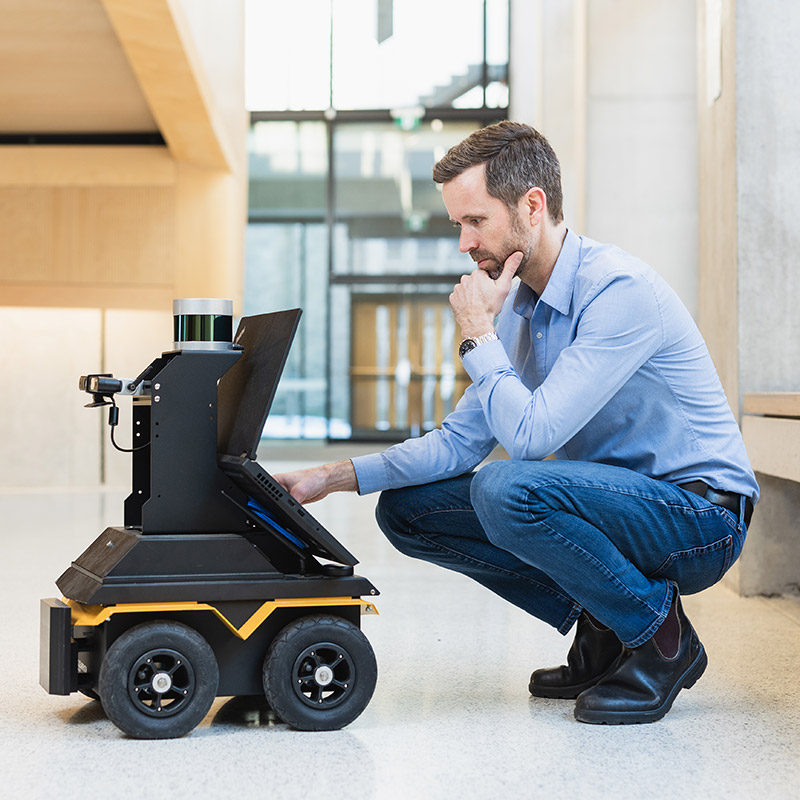Our 150 Stories
Table of Contents
Beating the heat
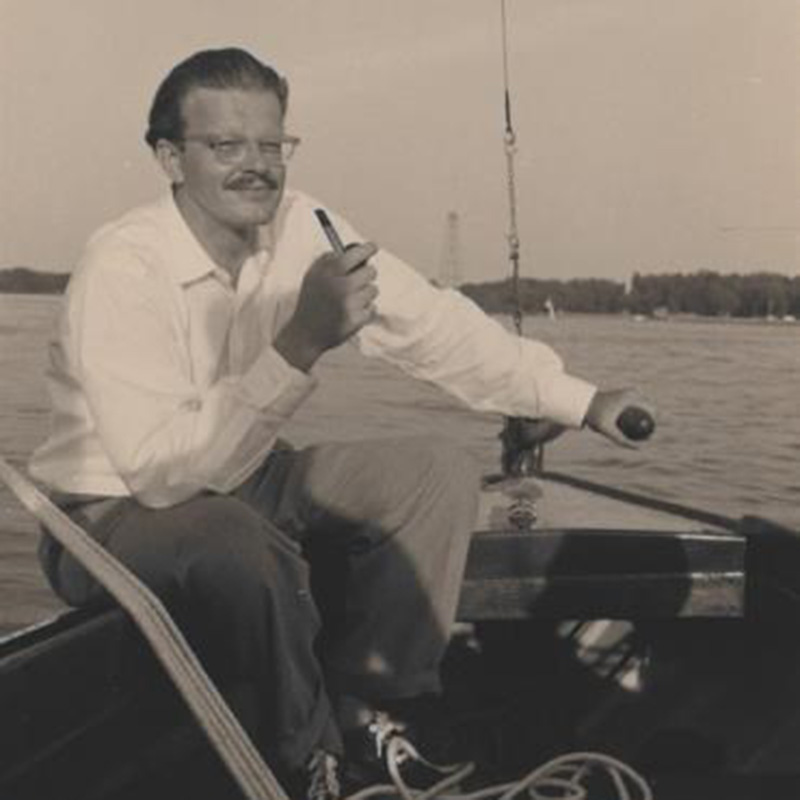
Frank Hooper
In the late 1940s, Professor Emeritus Frank Hooper (MIE) believed that Canada could be a perfect place for ground source heat pumps. Not only did he provide data to prove geothermal exchange systems were feasible, but he designed and installed a ground source heat pump for a newly built home in Port Credit. While heat pumps are based on the same general principles as refrigerators and air conditioners, they are also reversible: in the summer, they can extract heat from inside buildings and store it in the ground, while in the winter they can do the opposite. The success of Hooper’s work led to the production of heat pumps by several companies—including Hydro One—bringing renewable energy into Canadian homes and industries.
Landmark geo-exchange
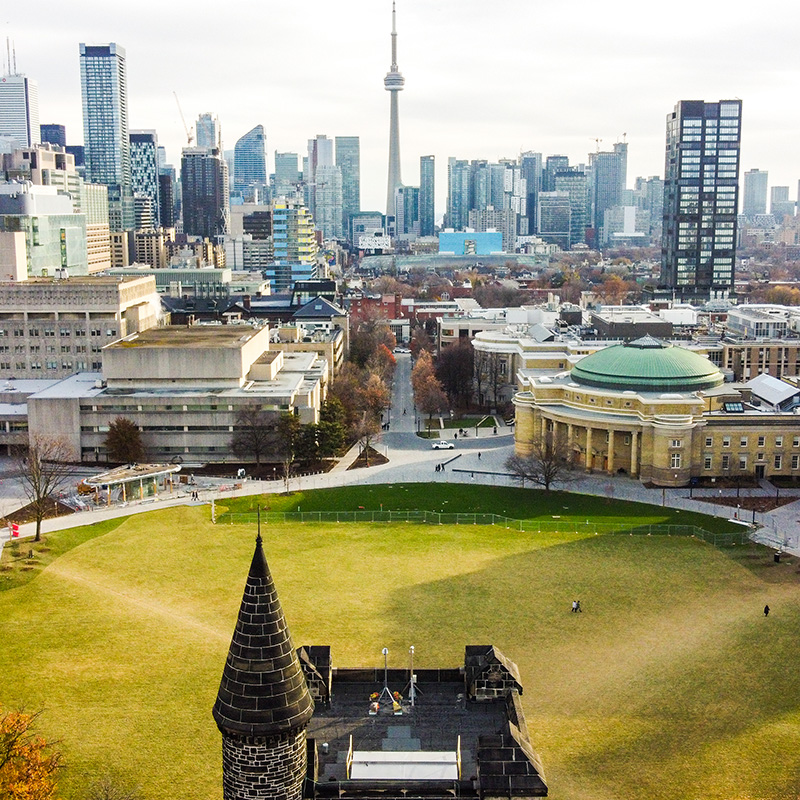
From stem cells to hydrogels
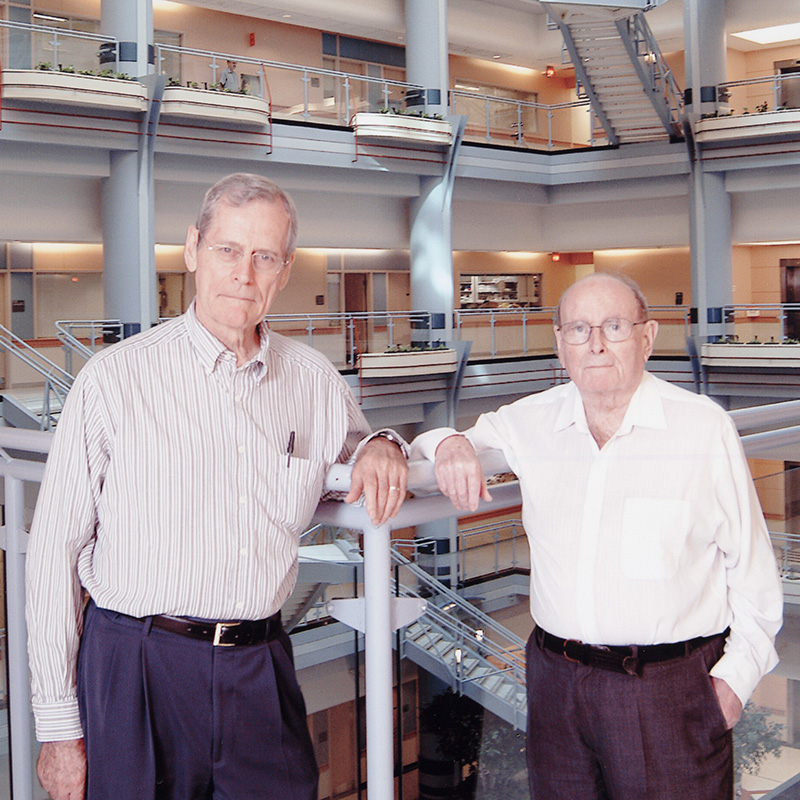
James Till and Ernest McCulloch
Molly Shoichet
Professor Molly Shoichet (ChemE, BME) is pioneering ways to not just prevent disease, but reverse conditions once thought irreversible. Her recent work on hydrogels provides promising treatment options for traumatic spinal cord injury, blindness and brain damage from stroke. Hydrogels can both protect stem cells that are being injected into the body by keeping them alive and healthy while they promote tissue repair,and allow for the controlled-release of drugs and therapeutics that aid healing. Shoichet’s innovative hydrogels also enable the discovery of new drugs against cancer, taking advantage of a completely new way to find solutions to intractable diseases.
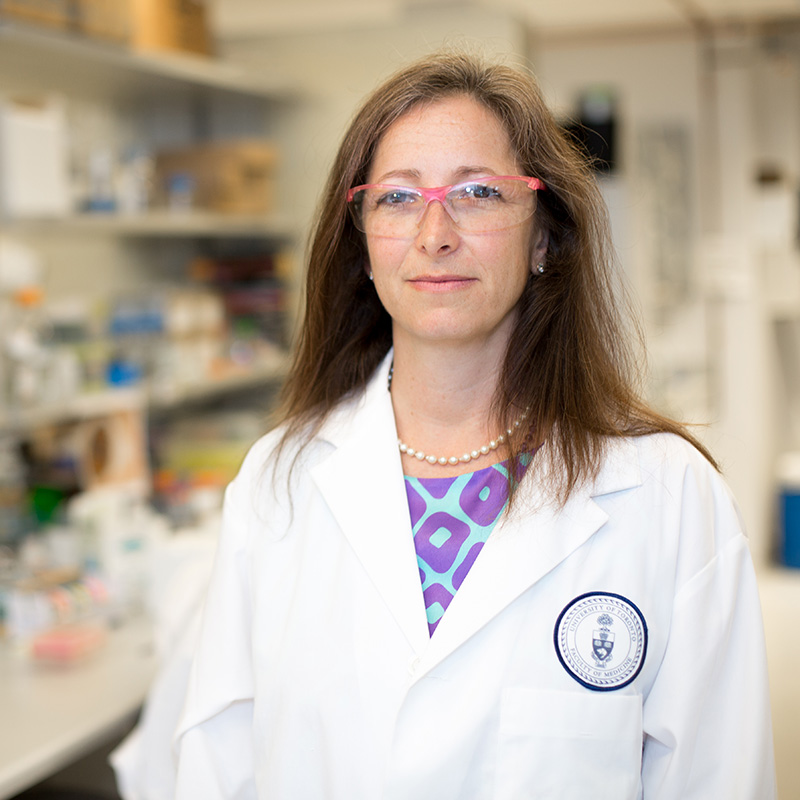
Laying the groundwork

Eli Robinsky
Although Professor Emeritus Eli Robinsky (CivMin) taught at the University of Toronto for nearly 30 years, he was mostly interested in what lay beneath. Along with developing methods for disposing mine tailings that were safer for the environment, Robinsky was involved in the design and construction of the foundations of the CN Tower. For this project, he descended into a 30-inch-wide and 117-foot-deep caisson to perform soil and foundational analysis on the grounds where Toronto’s landmark now stands.
Daman Panesar
Professor Daman Panesar’s (CivMin) take on sustainability is to keep things concrete. Passionate about cement chemistry and green building materials, she is leading a team to advance new technologies that will allow concrete to remove carbon from the air around it. She has also partnered with the Canada Green Building Council to look at lower-carbon options, their viability, implementation and opportunities – ultimately creating more durable infrastructure and a more sustainable future.
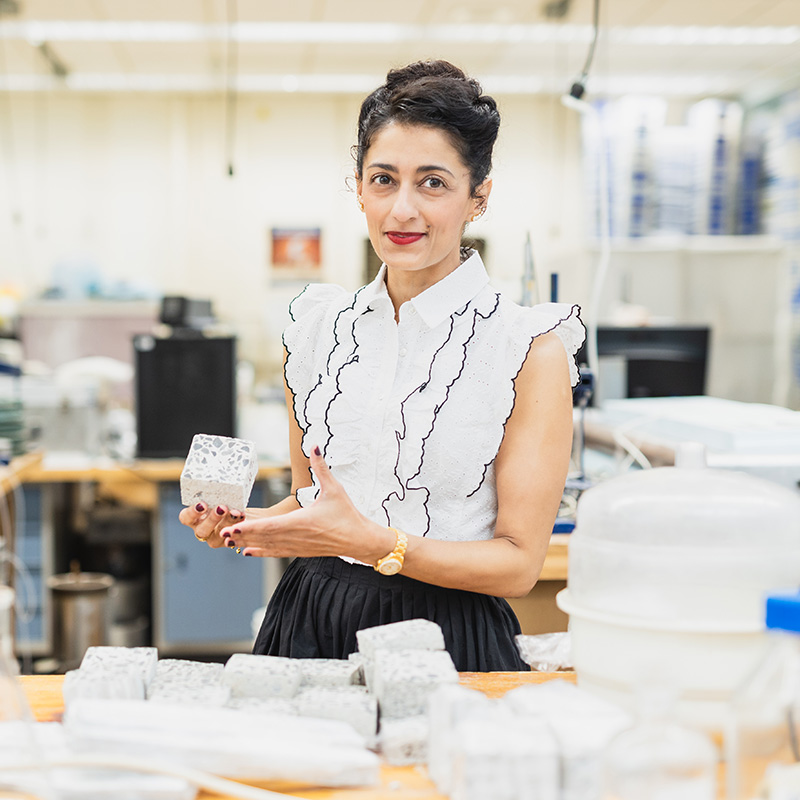
Life in the fast lane
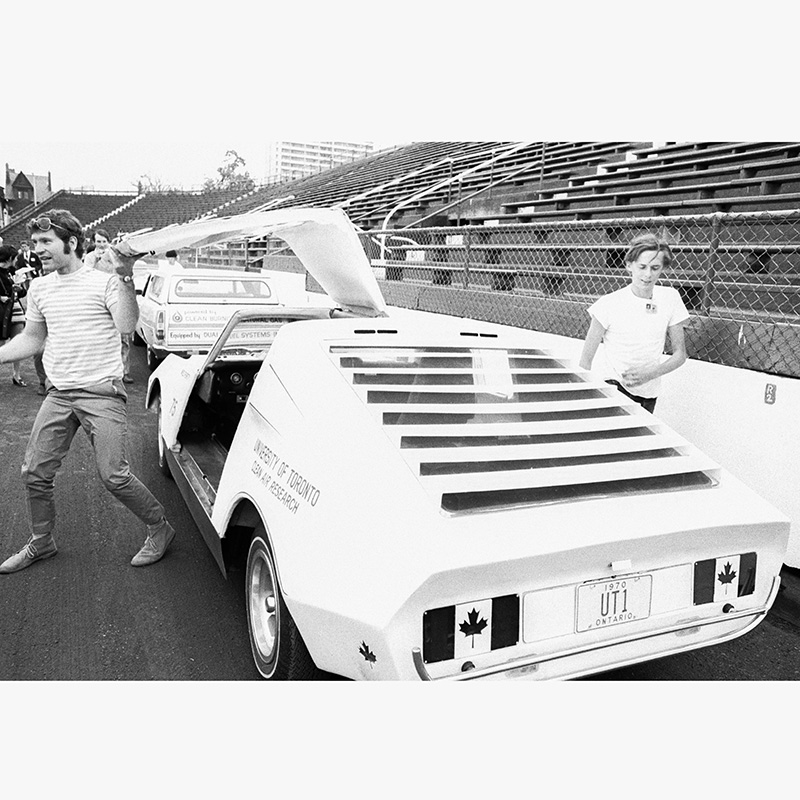
Miss Purity
Blue Sky Solar Racing Team
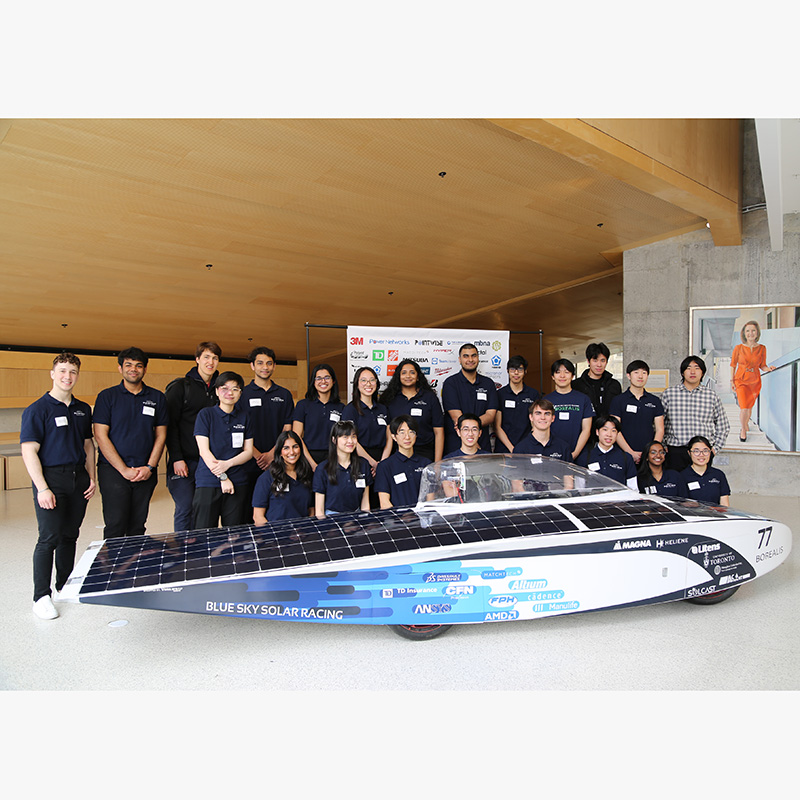
Mending a broken heart
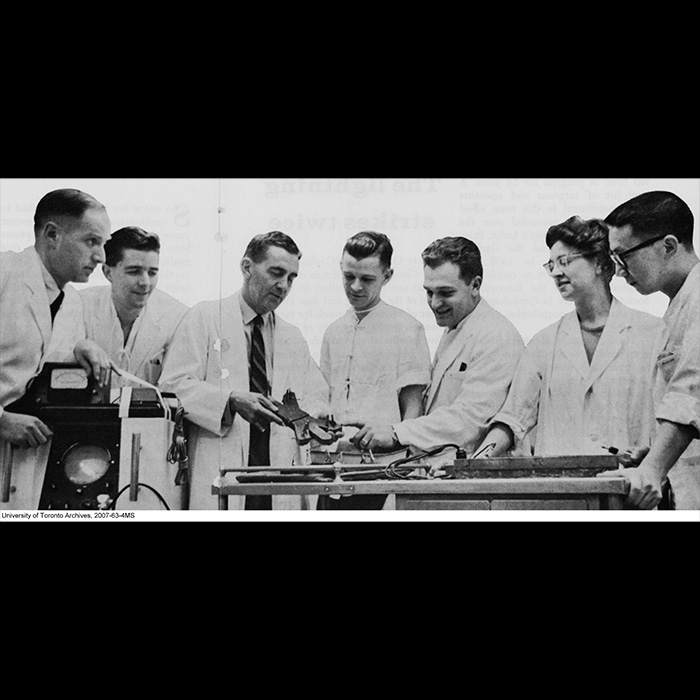
Wilfred G. Bigelow, John C. Callaghan and John A. Hopps
Matters of the heart are never simple, especially when it comes to performing surgery on an organ that keeps its rhythm at more than 100,000 beats a day. In the 1940s, while studying the application of low temperatures to slow heartbeats during surgery, two University of Toronto alumni, Wilfred G. Bigelow and John C. Callaghan, discovered that pulses from an electrical probe could kick-start the heart if it stopped. Working with engineer John A. Hopps, they created a device that would lay the groundwork for modern pacemakers, a device of which Hopps himself was eventually a recipient.
Milica Radisic
For Professor Milica Radisic (BME, ChemE), mending a broken heart is a scientific endeavor. She recently led a team of biomedical engineers in developing an expanding tissue bandage smaller than a postage stamp. This revolutionary patch can be injected via a small needle to repair heart tissue destroyed by heart attack or medical condition— avoiding the need for open heart surgery. Like her predecessors, Radisic relies on electrical pulses — but this time it’s to grow heart cells outside the body. Her pioneering organ-on-a-chip model continues to advance the field of cardiovascular study by avoiding the need for invasive procedures to glean information. The technology has already been used to gain greater understanding of complications from COVID-19 infections.
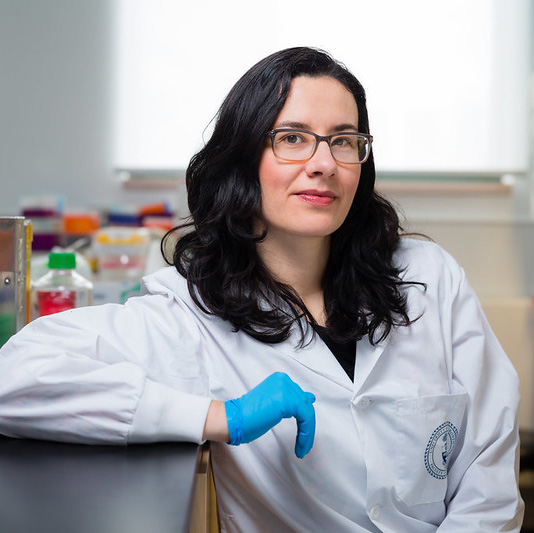
Mobility matters

George Klein
While spending time in his father’s jewellery and watch store growing up, George Klein (MechE 2T8) acquired an interest in tinkering, which set him on a path to becoming one of Canada’s most prolific inventors. Despite creating more than 1,000 novel items, it was in the wake of the Second World War — when many veterans lived with quadriplegia — that Klein invented his most famous: the world’s first electric wheelchair. After being exhibited at the Smithsonian Museum in Washington, the prototype found its way back to Canada. Since 2004, it has been on display in Ottawa at the Canada Science and Technology Museum, inspiring new generations to rethink how to make the world more accessible.
Trexo Robotics
Decades after manual wheelchairs went electric, one U of T start-up is helping children walk again. Trexo Robotics, co-founded by U of T alumni Rahul Udasi (MIE MEng 1T6) and Manmeet Maggu created robotic legs — or gait trainers — allowing children with disabilities to take steps unassisted. Children with diseases like cerebral palsy, muscular dystrophy and Rett syndrome can improve their endurance and gait, while also gaining confidence and independence. Currently, Trexo makes the only at-home robotic legs for children. The company hopes to soon expand to create technologies that can help people of all ages and ability levels, resulting in healthier, more equitable communities.
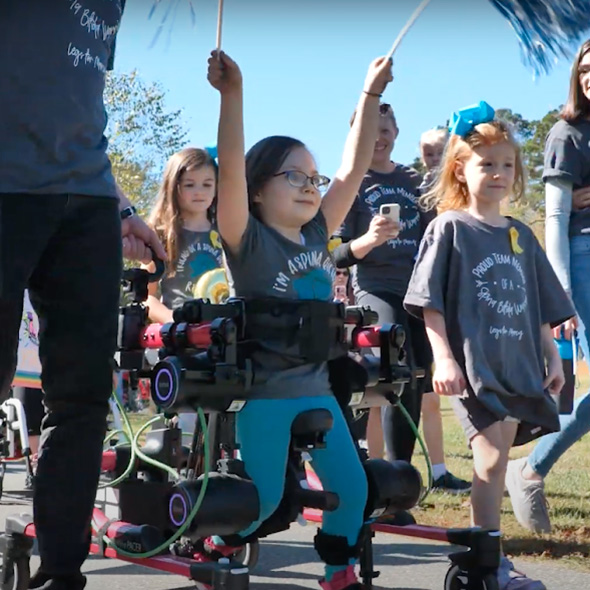
Fighting deadly diseases, faster
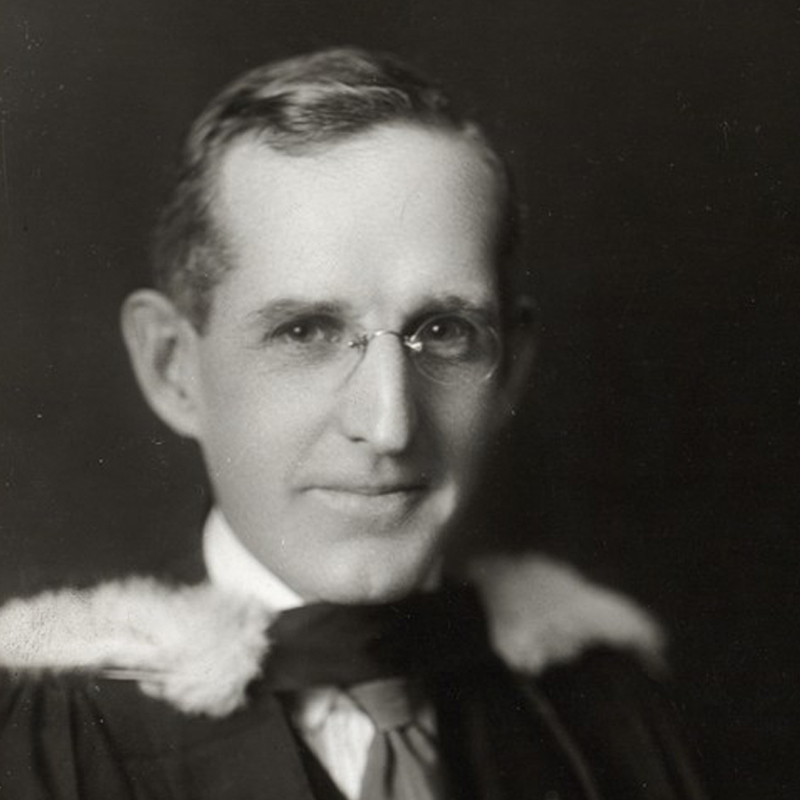
John FitzGerald
In the early 20th century, big aspirations grew from John FitzGerald’s interest in the minuscule world of bacteria. The pathologist and bacteriologist wanted to reform the Canadian public health system in which thousands of people were succumbing to infectious diseases each year. After a stint as a researcher at the Institut Pasteur du Brabant in Brussels, he became an associate professor at the University of Toronto’s newly minted Department of Hygiene in 1913. Tired of importing expensive antitoxins, serums and vaccines from the United States, he started concocting his own, eventually building a laboratory that would become the global pharmaceutical powerhouse, Sanofi Pasteur.
Omar F. Khan
More than 100 years later, vaccines are taking a technological turn in the hands of Professor Omar F. Khan, who holds the Canada Research Chair in Nucleic Acid Therapeutics. Khan has teamed up with the biotechnology company Moderna in a first-of-its-kind partnership between the company and university. Together, they’ve set their sights on preventing and treating existing and emerging diseases. The new nanotechnologies can deliver multiple instructions to cells, promoting healthy processes while stopping disease in its tracks. This pioneering work will not only make treatment more efficient, but could one day lead to a cancer vaccine.

Where innovation takes flight
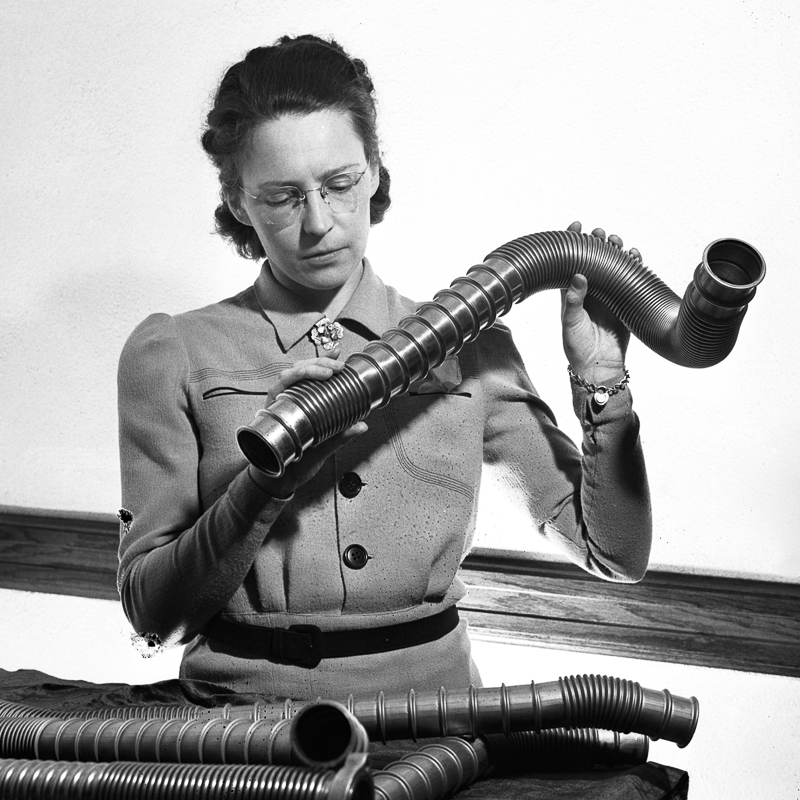
Elsie MacGill
When Elsie MacGill (ElecE 2T7) crossed the stage at convocation, she became the first woman in Canada to receive a university degree in electrical engineering. That moment marked the beginning of a career defined by breaking barriers — both of gender norms and of science. Known as “Queen of the Hurricanes” for her work as an aeronautical engineer during the Second World War, MacGill was also the first woman to be admitted as full member of the Engineering Institute of Canada; the first woman to receive the profession’s prestigious Gzowski Medal, and the first woman in the world to earn a master’s degree in aeronautical engineering.
Kristina Menton
MacGill’s torch is proudly carried today by many other U of T Engineering women. Kristina Menton (MechE 1T4 + PEY) is one of these women. As COO, and Head of Flight Test at Opener, Kristina plays a key role in the development of BlackFly, an all-electric, one-passenger aircraft capable of vertical take-off and landing (eVTOL). BlackFly is the only eVTOL aircraft routinely flying unmanned and manned flights in the world. One day soon, consumers will be rethinking how they travel, work and play integrating personal, sustainable, safe and fun aerial transportation into their lives.
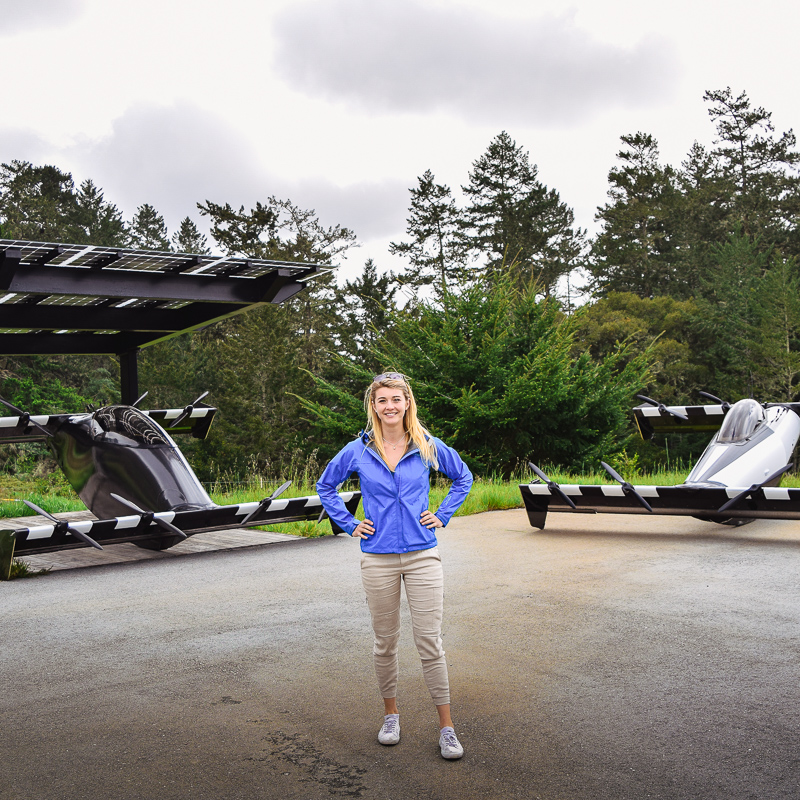
A refreshing take on food insecurity
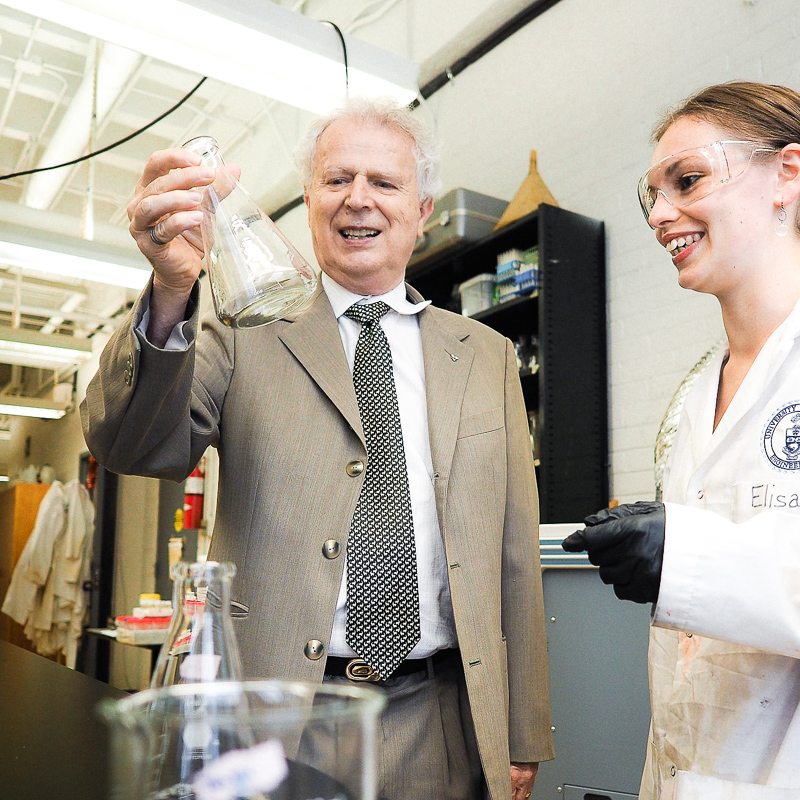
Levente Diosady
To the untrained eye, it seemed a small task: to enrich salt with iron. But the result would transform the health of millions. In 1993, after being approached by the Micronutrient Initiative, Professor Levente Diosady (ChemE) and his team set to work to bind salt with iron to help offset rising cases of anemia in developing countries. But initial testing showed iron couldn’t be added to salt in the same way as iodine. So instead, they packaged ferrous fumarate, an iron-rich compound, into tiny edible particles that look and feel nearly identical to salt grains, and which dissolve when consumed. These particles enabled the iron to be mixed with iodized salt, resulting in a double-fortified product. Today, double-fortified salt (DFS) produced in the Indian State of Tamil Nadu is added to school lunches served to more than five million children through a program supported by the Canadian International Development Agency, and reaches some 60 million consumers in three Indian states.
Folake Oyewole
More than 20 years later, U of T Engineering researchers continue to explore ways to reduce iron deficiency. Working out of Diosady’s lab with support from the Schlumberger Foundation’s Faculty for the Future Fellowship, chemical engineering PhD candidate Folake Oyewole is using food engineering to produce an iron-fortified version of zobo, a Nigerian cold beverage. If properly marketed, the fortified beverage could improve the iron status of women of reproductive age — all without medical infrastructure or any change in dietary habits.

Houston, we have a solution
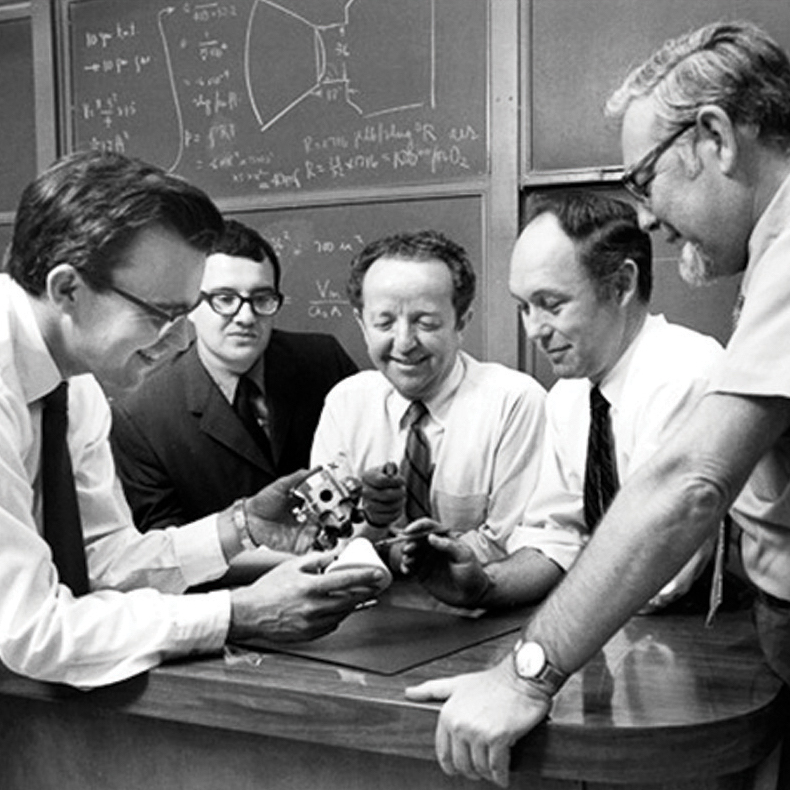
Ben Etkin, Barry French, Irving Glass, Peter Hughes, Phil Sullivan and Rod Tennyson
An explosion in an oxygen tank. Critically damaged life support systems. A failed moon landing, followed by uncertainty about a safe return home. When Apollo 13 astronauts were in trouble, NASA called the University of Toronto Institute for Aerospace Studies (UTIAS). Professors Ben Etkin, Barry French, Irving Glass, Peter Hughes, Phil Sullivan and Rod Tennyson calculated whether the pressure resulting from a second explosive charge would be enough to separate the command module from the lunar module, allowing the astronauts to safely re-enter Earth’s atmosphere. In a matter of hours, the team had solved one of the most infamous engineering challenges of their time, helping save the astronauts’ lives and cementing UTIAS’ worldwide reputation.
Defiance
Fifty-two years later, U of T Engineering is continuing to test the limits of gravity. In a project spanning six years, a student-led team designed and built Defiance, Canada’s first-ever experimental hybrid rocket. While most rockets are powered by two solids, Defiance used a combination of solid paraffin and a liquid oxidizer — a safer method. The 5.4-metre Defiance reached an altitude of 6,400 metres or 21,000 feet, earning U of T first place in the Advanced Flight category of the inaugural Launch Canada rocket competition.
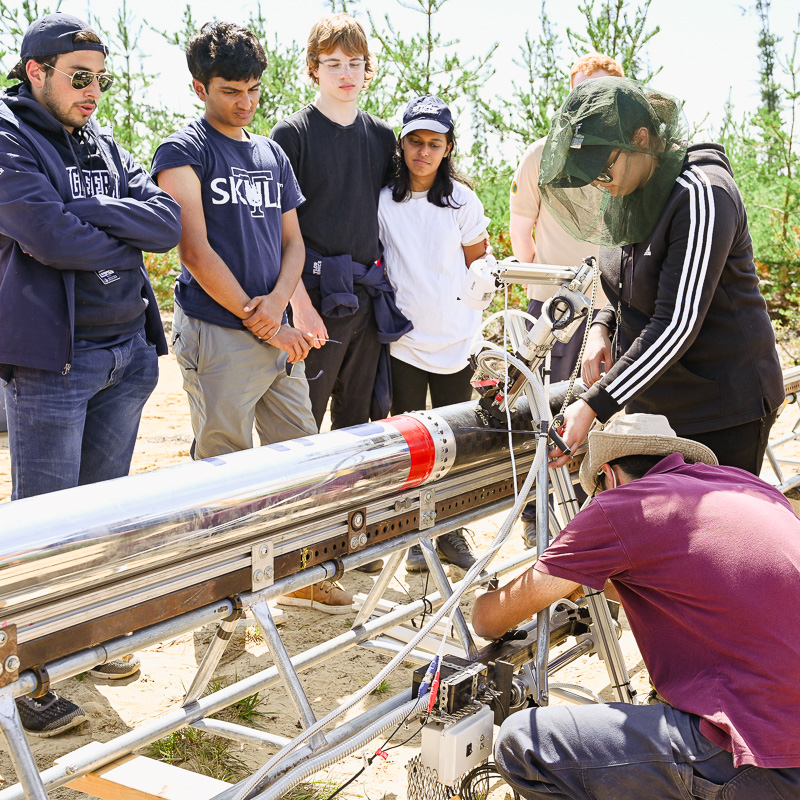
A goldmine for battery mining
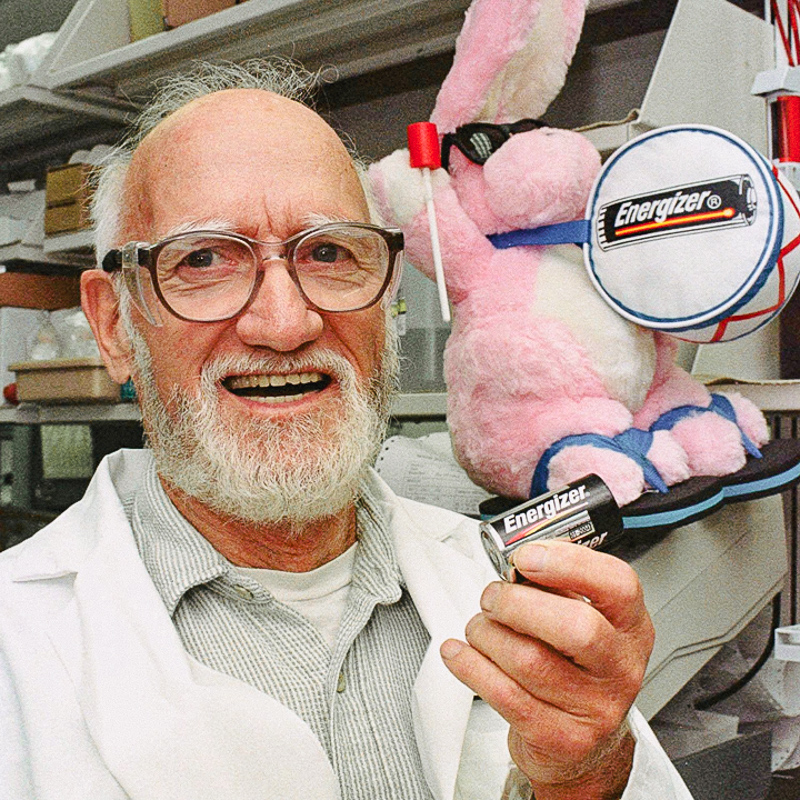
Lewis Urry
In 1957, recent U of T Engineering graduate Lewis Urry (ChemE 5T0) developed an innovation that would forever change consumer electronics. The original challenge? Discover a way to extend the life span of the commonly used zinc-carbon battery. But Urry knew he could do better. After deciding to create a new type of battery instead of improving the existing technology, Urry eventually produced a prototype with superior battery life and power output. The alkaline cell he created brought portable power to the masses, making batteries a consumer staple used around the world.
Gisele Azimi
Today, batteries power more than flashlights and toys. As the demand for electric vehicles (EV) continues to surge worldwide, so does the demand for the metals needed to build lithium-ion batteries. But getting these metals from raw ore takes a lot of energy and increases the cost of EV batteries. A new technique developed by Professor Gisele Azimi (ChemE, MSE) and her team at U of T Engineering’s Laboratory for Strategic Materials could help meet this challenge by mining valuable metals from lithium-ion batteries that have reached the end of their useful lifespan. This would result in less waste and ultimately a lower cost of electric vehicles for everyone.
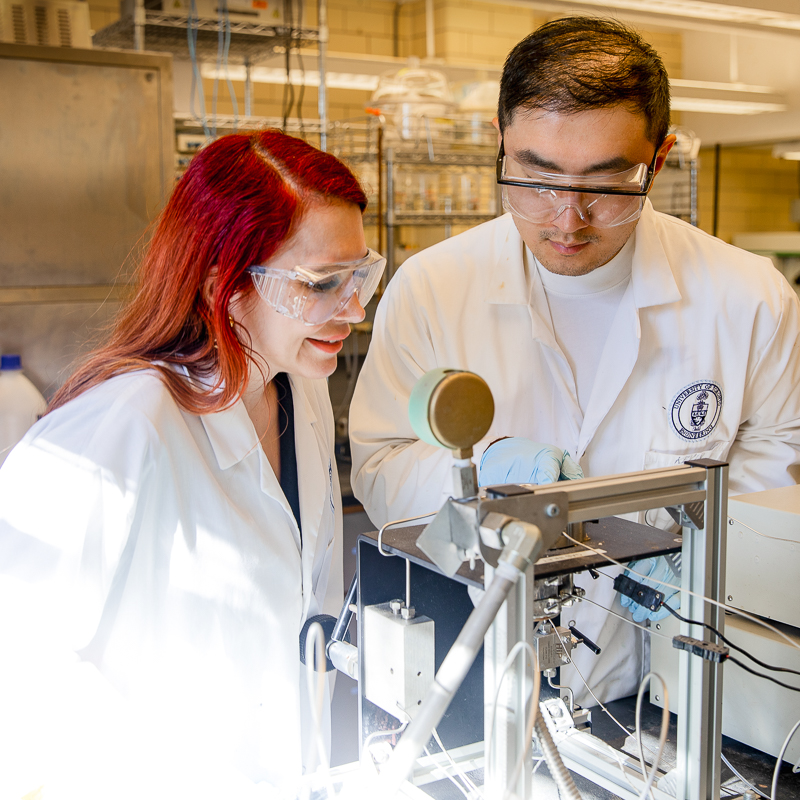
Predicting the unpredictable
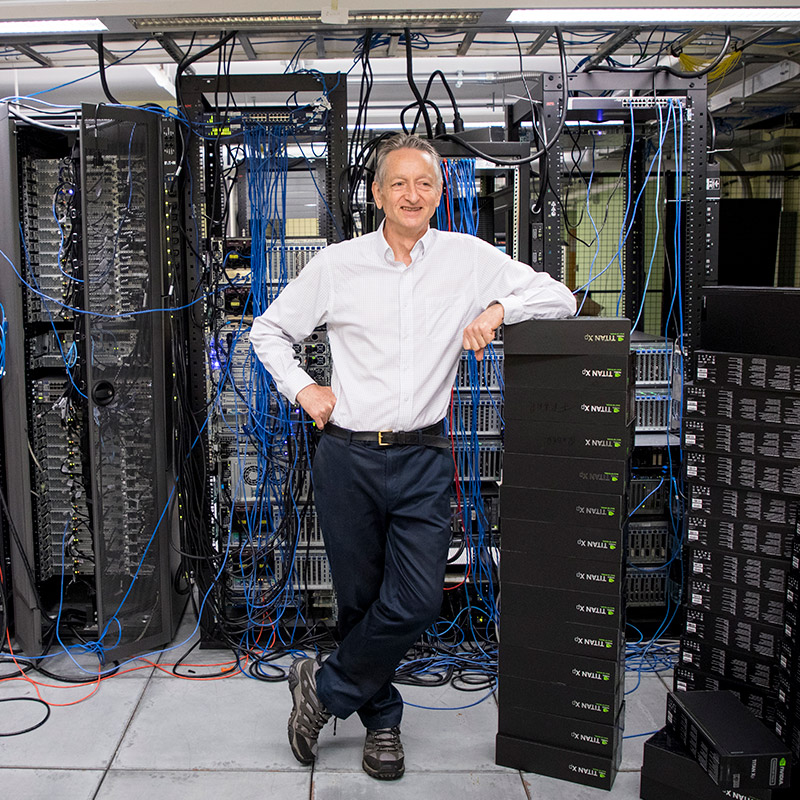
Geoffrey Hinton
As a high school student, Professor Geoffrey Hinton (Computer Science) had an idea that would one day turn science fiction into fact. What if machines could replicate the complex neural networks used in human thought processing? Building on this idea, Hinton came to expand the intellectual foundation of artificial intelligence (AI) by focusing on two key characteristics of the human brain: its ability to process information in a distributed fashion through interconnected brain cells, and its ability to learn from examples. Hinton’s pioneering work is the basis for all deep learning applications ranging from Siri to tools that diagnose cancer. Today, he is Chief Scientific Advisor at the Vector Institute, a non-profit research organization pushing the boundaries of what artificial intelligence can do.
Tim Barfoot
Once thought impossible, AI is now being used to predict the unpredictable. Professor Tim Barfoot (UTIAS) is leading a team of researchers developing a new AI strategy that allows robots to anticipate the movement of people rather than react once confronted with obstacles. The robots use 3D grid maps stored in their processors and special light sensing technology to predict spontaneous movement and navigate crowds. Someday this technology could be applied to healthcare settings, allowing robots to successfully navigate busy hospital hallways— improving care and efficiency for all.
